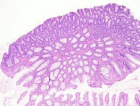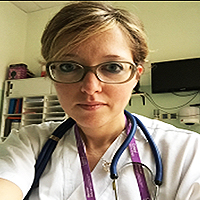Abstract
Research Article
Rapid Microbial Growth in Reusable Drinking Water Bottles
Qishan Liu* and Hongjun Liu
Published: 06 October, 2017 | Volume 1 - Issue 1 | Pages: 055-062
Bacteria has been known to grow in pipes of water distribution systems and bottled drinking water. Its growth in reusable drinking water bottles is not clear even though they have become more popular and used by children and adults daily everywhere. This study found that there is an extremely high level of bacteria content and a rapid microbial growth in reusable drinking water bottles. The bacteria content tested by heterotrophic plate count (HPC) is in a range of 0-2.4x105 CFU/mL with an average of about 34,000 bacteria counts/ml for bottles used by children and 75,000 bacteria counts/ml for bottles used by adults. Bacteria number can quickly increases to 1-2 million counts/ml in the bottles one day later. Considering the high level of HPC bacteria content in the reusable drinking water bottles, it may be necessary to have some control measures to reduce the bacteria level and to minimize the associated likely health risk of the disease spreading since many people use reusable water bottles every day.
Read Full Article HTML DOI: 10.29328/journal.acee.1001007 Cite this Article Read Full Article PDF
Keywords:
Reusable drinking water bottle; Heterotrophic plate count; Bacteria enumeration; Drinking water
References
- WHO 2002 The World Health Report 2002-Reducing Risks, Promoting Healthy Life. Geneva World Health Organization. Geneva.
- Brocklehurst C. The Case for Water and Sanitation. Better Water and Sanitation Make Good Fiscal and Economic Sense and should be Prominent in PRSPs and Budget Allocation. Water and Sanitation Programme-Africa. 2004.
- WHO, UNICEF. Joint Monitoring Programme for Water Supply and Sanitation. In: Progress on sanitation and drinking-water: 2010 Update. World Health Organization and United Nations Children’s Fund. Geneva and New York. 2010.
- Liu HJ, Tang XS, Liu QS. A novel point-of-use water treatment method by antimicrobial nanosilver textile material. J Water Health. 2014; 12: 670-677. Ref.: https://goo.gl/zHjM9d
- Guidelines for drinking-water quality, First Addendum to 4th Edition. World Health Organization, Geneva, 2017.
- Warburton DW, Peterkin PI, Weiss KF, Johnston MA. Microbiological quality of bottled water sold in Canada. Can J Microbiol. 1986; 32: 891-893. Ref.: https://goo.gl/yBGNva
- Bischofberger T, Cha SK, Schmitt R, König B, Schmidt-Lorenz W. The bacterial flora of non-carbonated, natural mineral water from the springs to reservoir and glass and plastic bottles. Int J Food Microbiol. 1990; 11: 51-71. Ref.: https://goo.gl/jck5aw
- Hunter PR. A Review: The microbiology of bottled natural mineral waters. J Appl Bacteriol. 1993; 74: 345-352. Ref.: https://goo.gl/Az9qeq
- Loy A, Beisker W, Meier H. Diversity of bacteria growing in natural mineral water after bottling. Appl Environ Microbiol. 2005; 71: 3624-3632. Ref.: https://goo.gl/ZVHn2q
- Oyedeji O, Olutiola PO, Moninuola MA. Microbiological quality of packaged drinking water brands marketed in Ibadan metropolis and Ile-Ife city in South Western Nigeria. Afr J Microbiol Res. 2010; 4: 96-102. Ref.: https://goo.gl/b8xD9C
- LeChevallier MW. Coliform Regrowth in Drinking Water. J of American Water Works Association. 1990; 82: 74-86. Ref.: https://goo.gl/MVhpcZ
- Evison L, Sunna N. Microbial Regrowth in House-hold Water Storage Tanks. Journal of American Water Works Association. 2001; 93: 85-94. Ref.: https://goo.gl/JkH2tE
- Pepper IL, Rusin P, Quintanar DR, Haney C, Josephson KL, et.al. Tracking the concentration of heterotrophic plate count bacteria from the source to the consumer's tap. Int J Food Microbiol. 2004; 92: 289-295. Ref.: https://goo.gl/gzBemb
- Patrick AS, Roland A, Anani C, Dampare SB. Nutrient-Induced Growth of Coliform and HPC Bacteria in Drinking Water Pipes. J of Env Pro. 2012; 3: 508-517. Ref.: https://goo.gl/2Rp1e4
- Patrick AS, Roland A. Impact of Temperature on Bacterial Growth and Survival in Drinking-Water Pipes. Res J of Env and Earth Sci. 2012; 4: 807-817. Ref.: https://goo.gl/QrBx4L
- APHA, AWWA, WEF. Standard Methods for the Examination of Water and Wastewater, 22th ed, edited by Rice EW, Baird RB, Eaton AD, Clesceri LS. American Public Health Association. Washington DC. 2012.
- Gonzalez C, Gutierrez C, Grande T. Bacterial flora in bottled uncarbonated mineral drinking water. Can J Microbiol. 1987; 33: 1120-1125. Ref.: https://goo.gl/xzyq89
- Manaia CM, Nunes OC, Morais PV, Da Costa MS. Heterotrophic plate counts and the isolation of bacteria from mineral waters on selective and enrichment media. J Appl Bacteriol. 1990; 69: 871-876. Ref.: https://goo.gl/ABjykp
- Tryland I, Fiksdal L. Rapid enzymatic detection of heterotrophic activity of environmental bacteria. Water Sci Tech. 1998; 38: 95-101. Ref.: https://goo.gl/fNN7Rq
- Leclerc H, Moreau A. Microbiological safety of natural mineral water. FEMS Microbiol Rev. 2002; 26: 207-222. Ref.: https://goo.gl/LYR7mX
- Bartram J, Cotruvo J, Exner M, Fricker C, Glasmacher A. Heterotrophic Plate Counts and Drinking-water Safety-The Significance of HPCs for Water Quality and Human Health, World Health Organization, NSF International, International Water Association, IWA Publishing. London, UK. 2003.
- Hambsch B. Distributing groundwater without a disinfectant residual. J Am Water Works Assoc. 1999; 91: 81-85. Ref.: https://goo.gl/JYcgF3
- Ye B, Yang L, Li Y, Wang W, Li H. Water Sources and Their Protection from the Impact of Microbial Contamination in Rural Areas of Beijing, China. Int J Environ Res Public Health. 2013; 10: 879-891. Ref.: https://goo.gl/823rmo
- Health Canada. Guidelines for Canadian Drinking Water Quality, 6th edn Minister of Public Works and Government Services Canada, Ottawa, Ontario. 1996.
Figures:

Figure 1

Figure 2

Figure 3

Figure 4

Figure 5

Figure 6

Figure 7
Similar Articles
-
Rapid Microbial Growth in Reusable Drinking Water BottlesQishan Liu*,Hongjun Liu. Rapid Microbial Growth in Reusable Drinking Water Bottles. . 2017 doi: 10.29328/journal.acee.1001007; 1: 055-062
-
Defluoridation of water by the Homa* method, a co-precipitation technique using wood ash leachate and alumKazungu ML,Wekesa NA,Balozi KB,Manyala OJ,Maghanga KJ,Etiégni L*. Defluoridation of water by the Homa* method, a co-precipitation technique using wood ash leachate and alum. . 2022 doi: 10.29328/journal.acee.1001037; 6: 031-039
-
Drinking-water Quality Assessment in Selective Schools from the Mount LebanonWalaa Diab, Mona Farhat, Marwa Rammal, Chaden Moussa Haidar*, Ali Yaacoub, Alaa Hamzeh. Drinking-water Quality Assessment in Selective Schools from the Mount Lebanon. . 2024 doi: 10.29328/journal.acee.1001061; 8: 018-024
Recently Viewed
-
Agriculture High-Quality Development and NutritionZhongsheng Guo*. Agriculture High-Quality Development and Nutrition. Arch Food Nutr Sci. 2024: doi: 10.29328/journal.afns.1001060; 8: 038-040
-
A Low-cost High-throughput Targeted Sequencing for the Accurate Detection of Respiratory Tract PathogenChangyan Ju, Chengbosen Zhou, Zhezhi Deng, Jingwei Gao, Weizhao Jiang, Hanbing Zeng, Haiwei Huang, Yongxiang Duan, David X Deng*. A Low-cost High-throughput Targeted Sequencing for the Accurate Detection of Respiratory Tract Pathogen. Int J Clin Virol. 2024: doi: 10.29328/journal.ijcv.1001056; 8: 001-007
-
A Comparative Study of Metoprolol and Amlodipine on Mortality, Disability and Complication in Acute StrokeJayantee Kalita*,Dhiraj Kumar,Nagendra B Gutti,Sandeep K Gupta,Anadi Mishra,Vivek Singh. A Comparative Study of Metoprolol and Amlodipine on Mortality, Disability and Complication in Acute Stroke. J Neurosci Neurol Disord. 2025: doi: 10.29328/journal.jnnd.1001108; 9: 039-045
-
Development of qualitative GC MS method for simultaneous identification of PM-CCM a modified illicit drugs preparation and its modern-day application in drug-facilitated crimesBhagat Singh*,Satish R Nailkar,Chetansen A Bhadkambekar,Suneel Prajapati,Sukhminder Kaur. Development of qualitative GC MS method for simultaneous identification of PM-CCM a modified illicit drugs preparation and its modern-day application in drug-facilitated crimes. J Forensic Sci Res. 2023: doi: 10.29328/journal.jfsr.1001043; 7: 004-010
-
A Gateway to Metal Resistance: Bacterial Response to Heavy Metal Toxicity in the Biological EnvironmentLoai Aljerf*,Nuha AlMasri. A Gateway to Metal Resistance: Bacterial Response to Heavy Metal Toxicity in the Biological Environment. Ann Adv Chem. 2018: doi: 10.29328/journal.aac.1001012; 2: 032-044
Most Viewed
-
Evaluation of Biostimulants Based on Recovered Protein Hydrolysates from Animal By-products as Plant Growth EnhancersH Pérez-Aguilar*, M Lacruz-Asaro, F Arán-Ais. Evaluation of Biostimulants Based on Recovered Protein Hydrolysates from Animal By-products as Plant Growth Enhancers. J Plant Sci Phytopathol. 2023 doi: 10.29328/journal.jpsp.1001104; 7: 042-047
-
Sinonasal Myxoma Extending into the Orbit in a 4-Year Old: A Case PresentationJulian A Purrinos*, Ramzi Younis. Sinonasal Myxoma Extending into the Orbit in a 4-Year Old: A Case Presentation. Arch Case Rep. 2024 doi: 10.29328/journal.acr.1001099; 8: 075-077
-
Feasibility study of magnetic sensing for detecting single-neuron action potentialsDenis Tonini,Kai Wu,Renata Saha,Jian-Ping Wang*. Feasibility study of magnetic sensing for detecting single-neuron action potentials. Ann Biomed Sci Eng. 2022 doi: 10.29328/journal.abse.1001018; 6: 019-029
-
Pediatric Dysgerminoma: Unveiling a Rare Ovarian TumorFaten Limaiem*, Khalil Saffar, Ahmed Halouani. Pediatric Dysgerminoma: Unveiling a Rare Ovarian Tumor. Arch Case Rep. 2024 doi: 10.29328/journal.acr.1001087; 8: 010-013
-
Physical activity can change the physiological and psychological circumstances during COVID-19 pandemic: A narrative reviewKhashayar Maroufi*. Physical activity can change the physiological and psychological circumstances during COVID-19 pandemic: A narrative review. J Sports Med Ther. 2021 doi: 10.29328/journal.jsmt.1001051; 6: 001-007

HSPI: We're glad you're here. Please click "create a new Query" if you are a new visitor to our website and need further information from us.
If you are already a member of our network and need to keep track of any developments regarding a question you have already submitted, click "take me to my Query."













































































































































